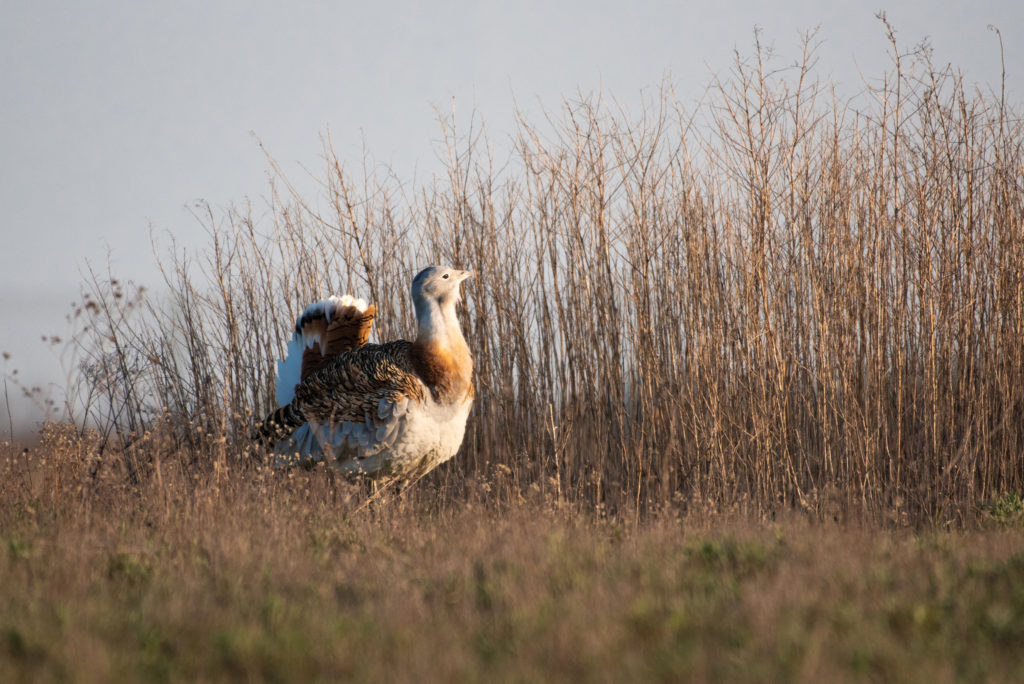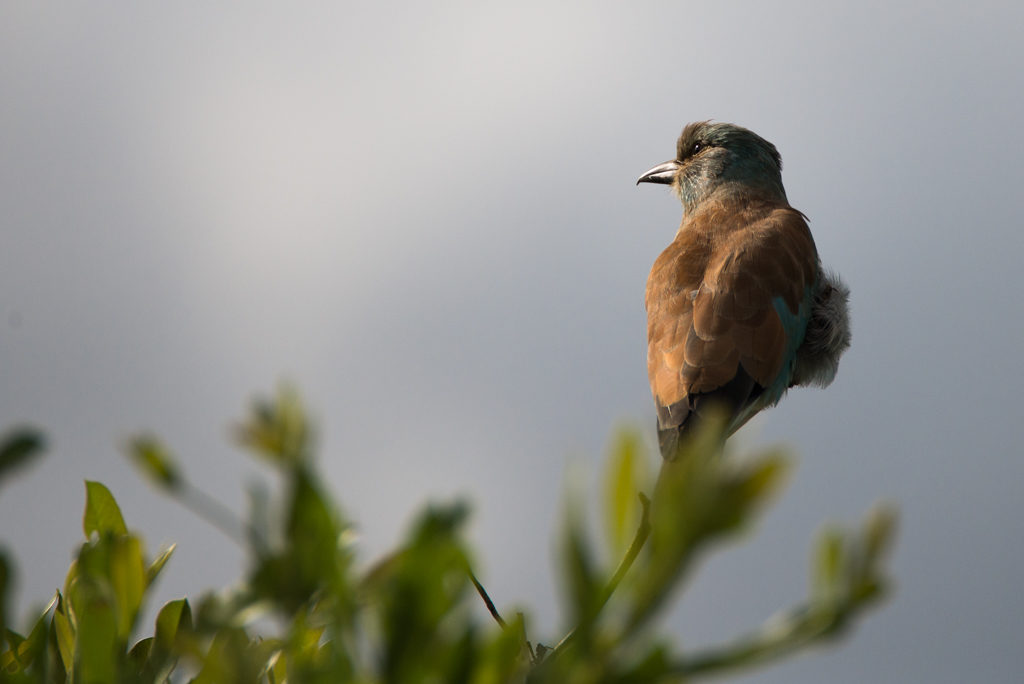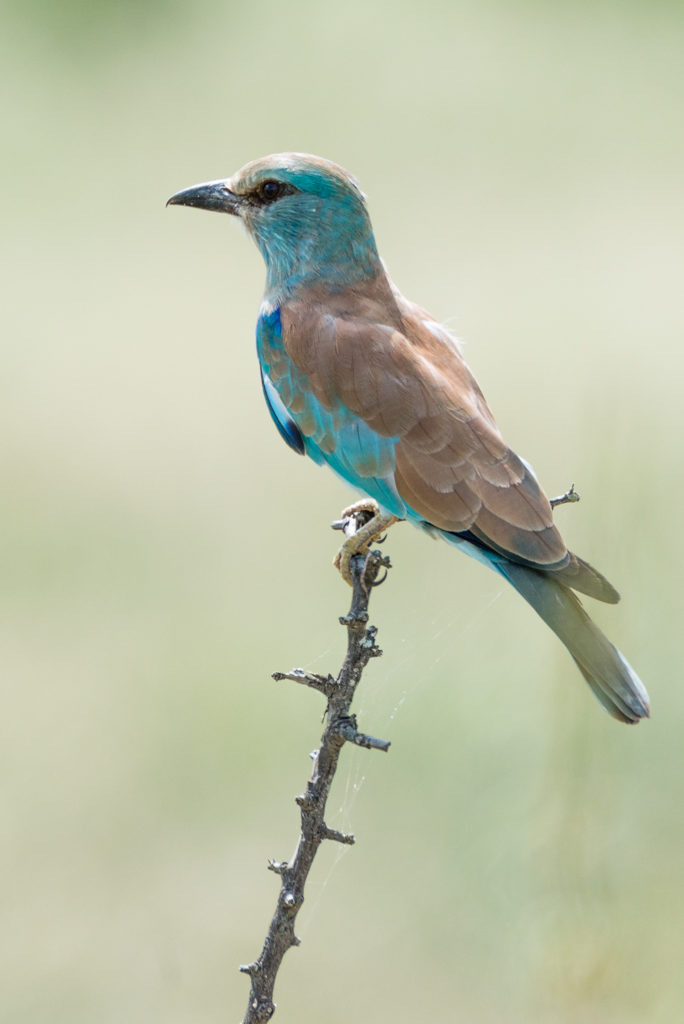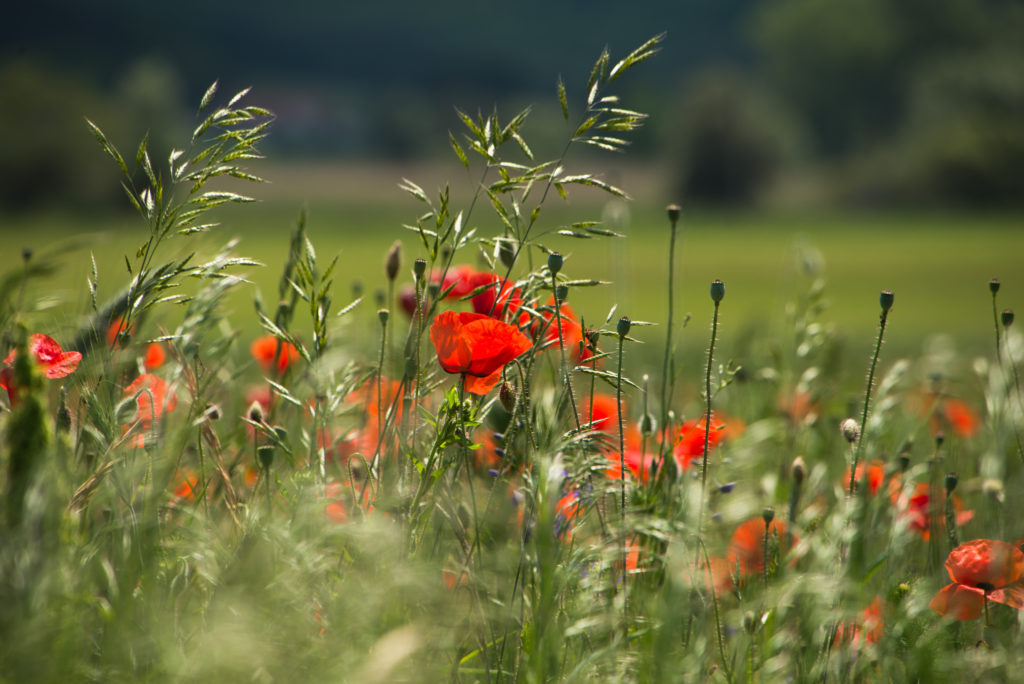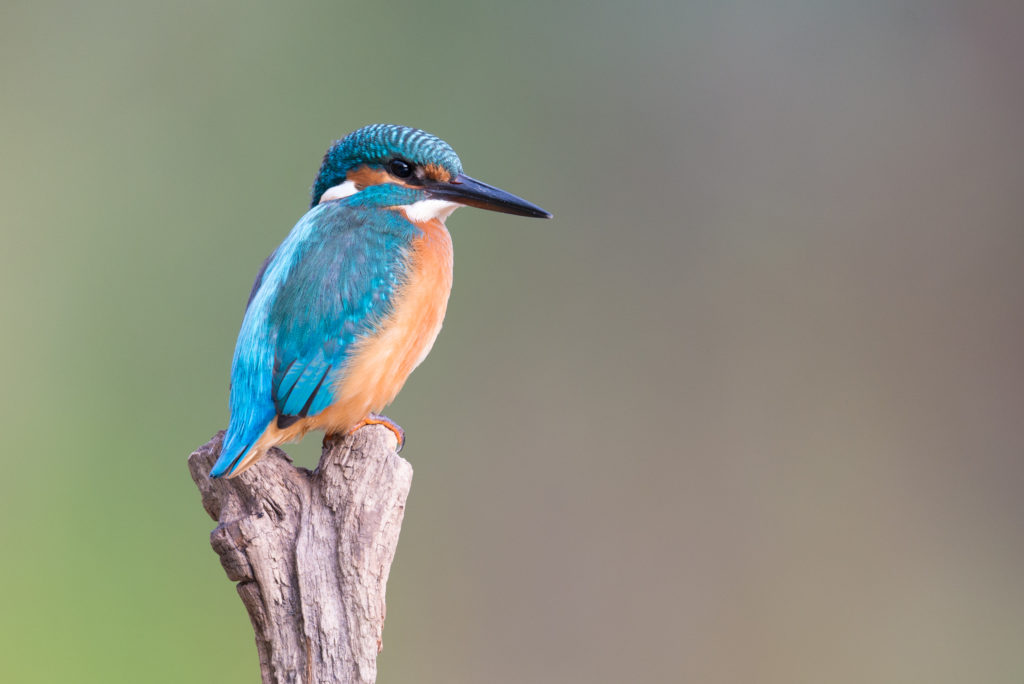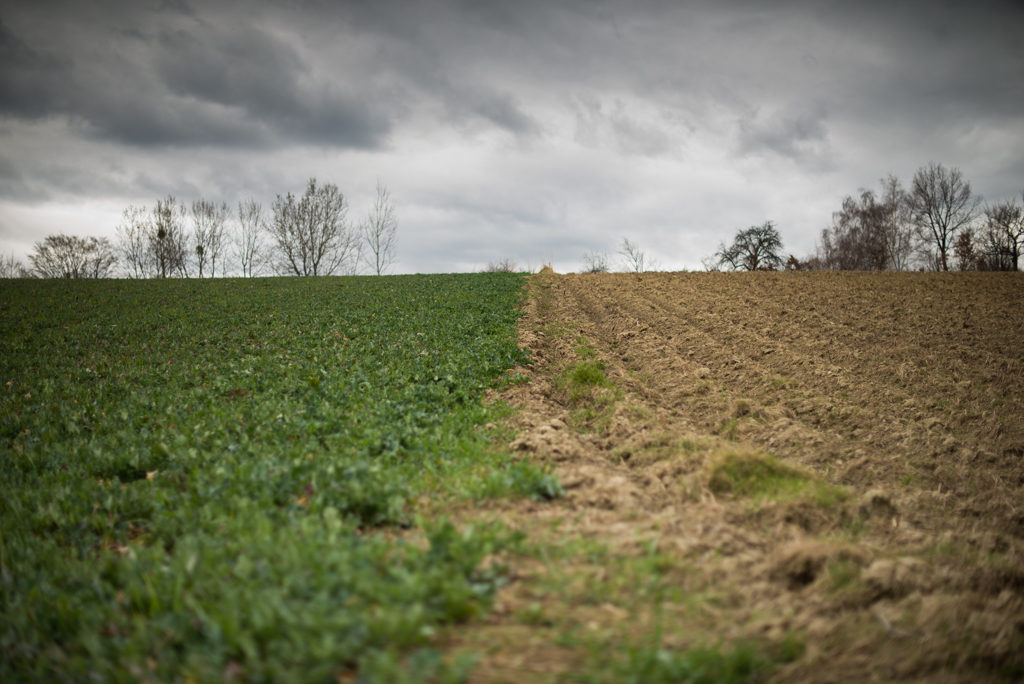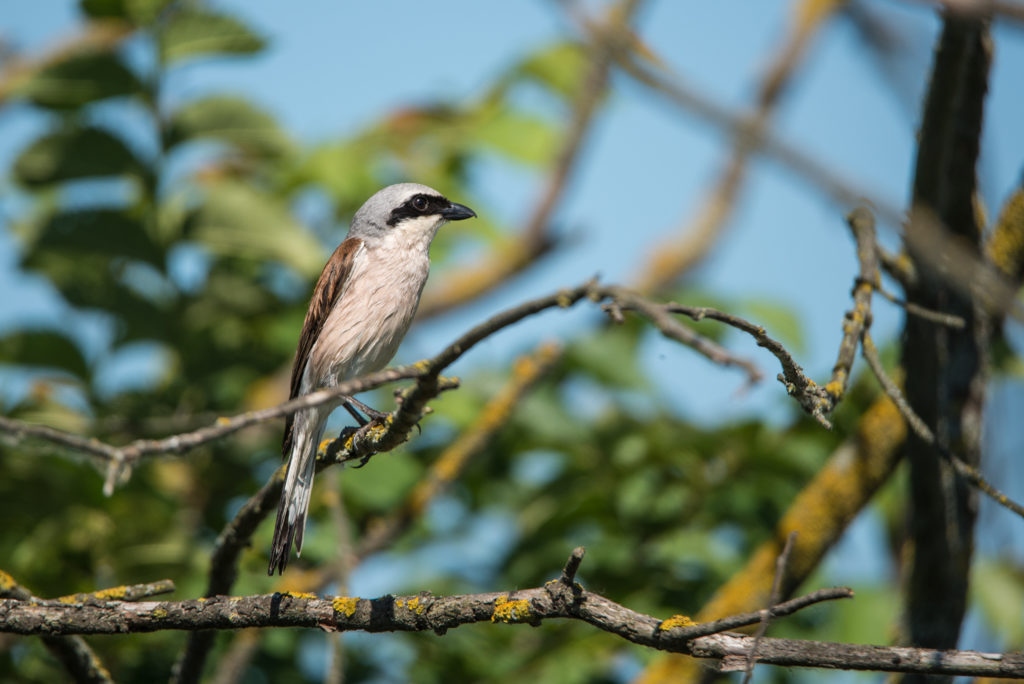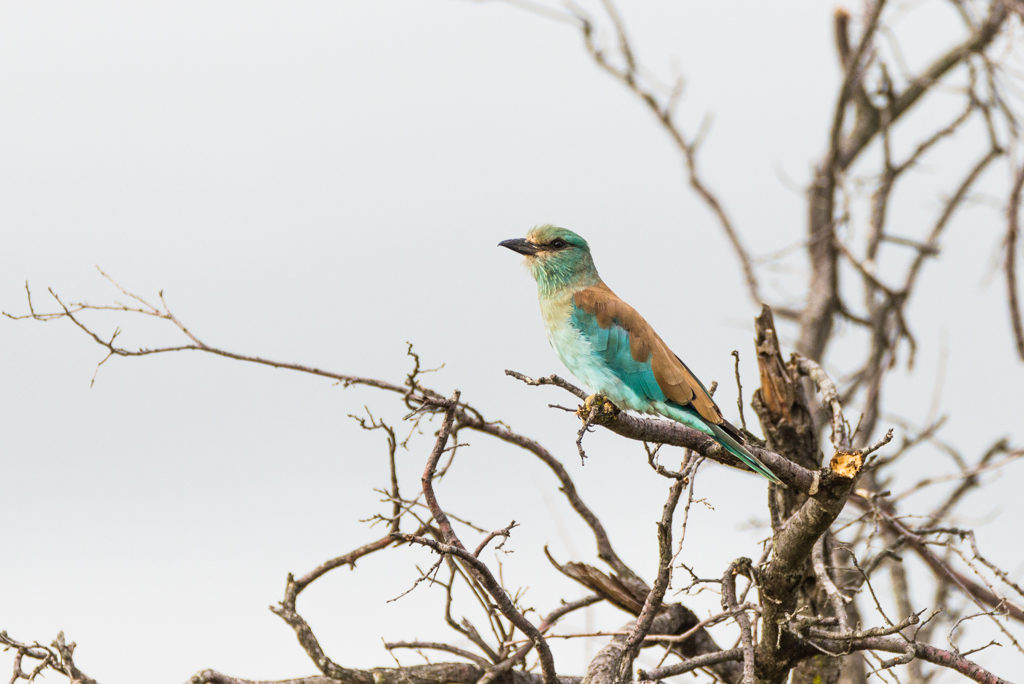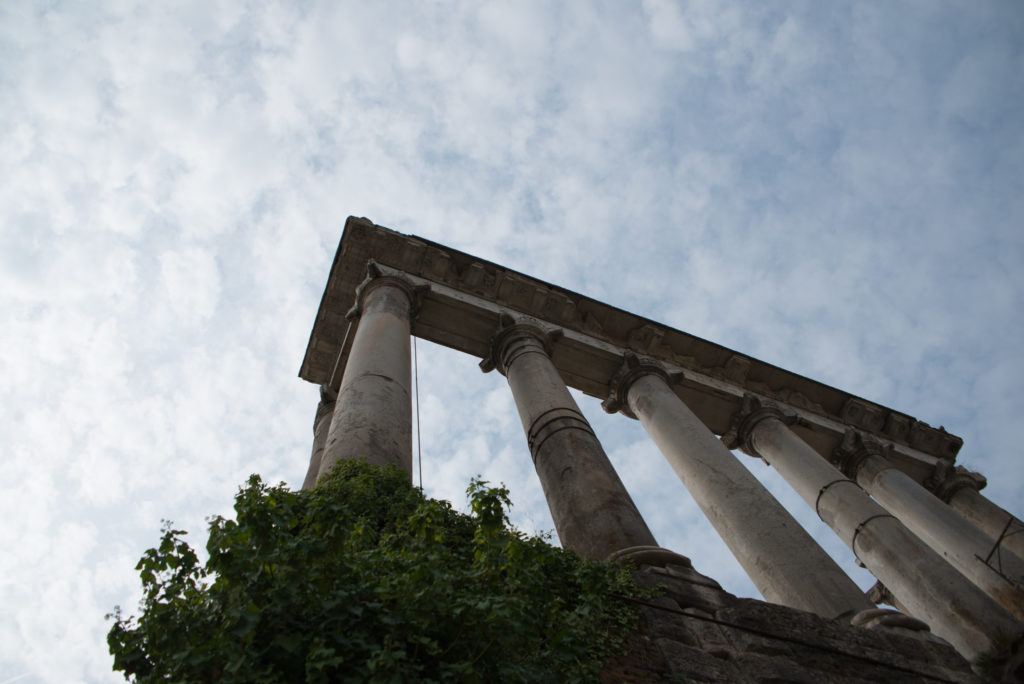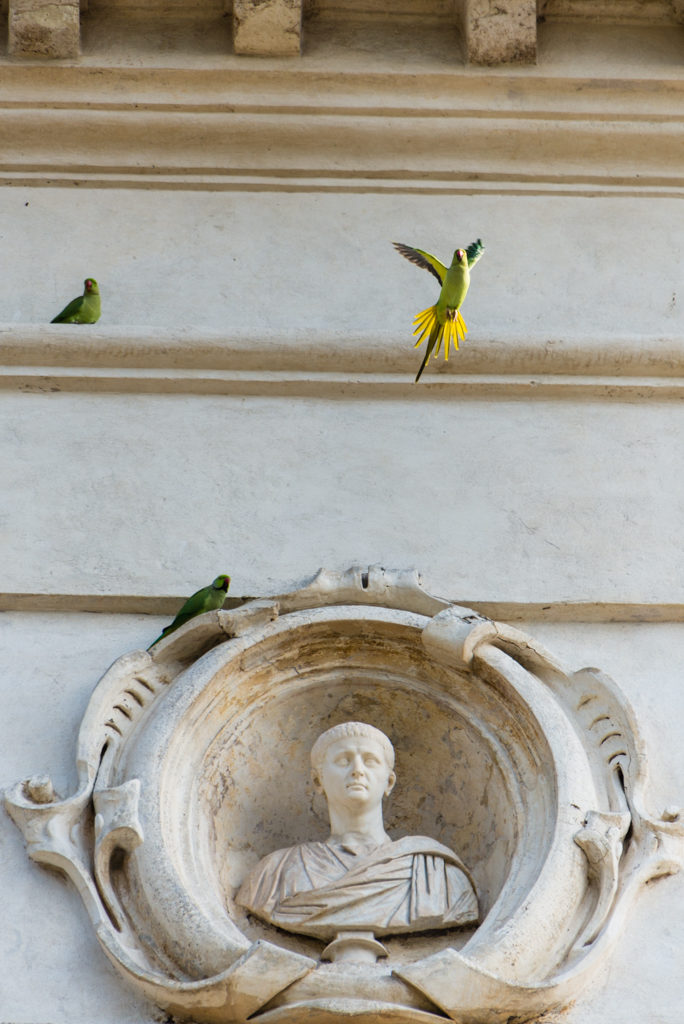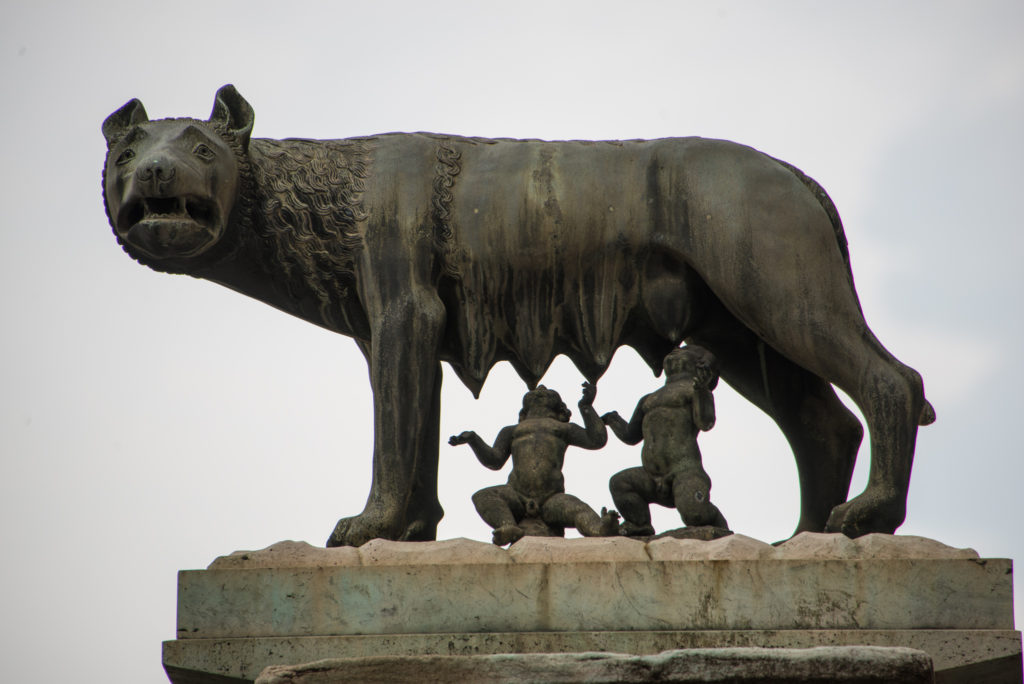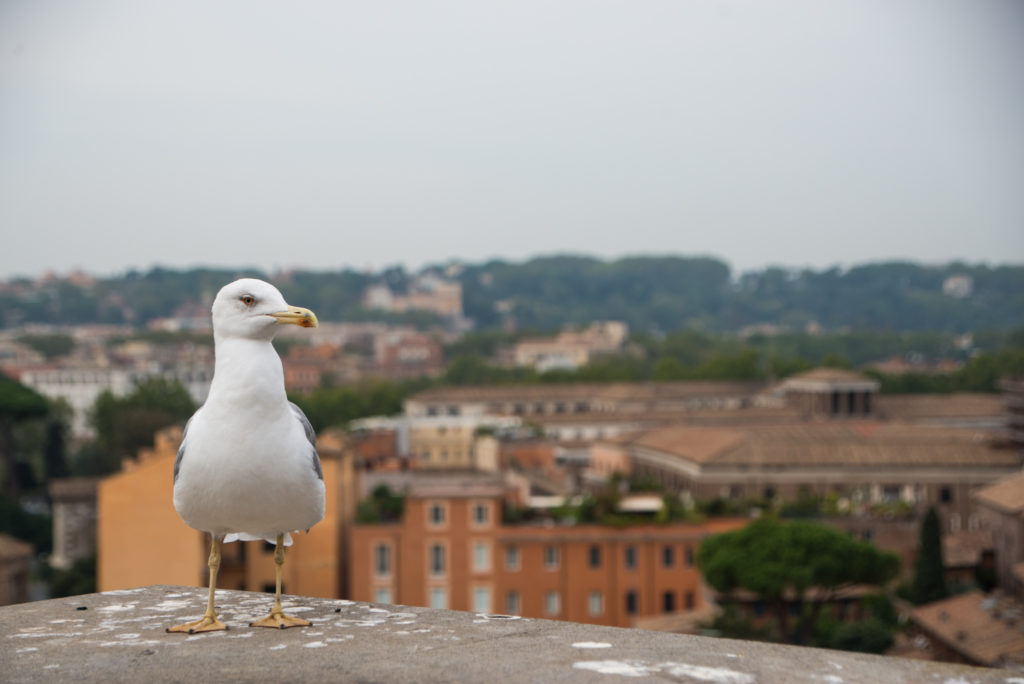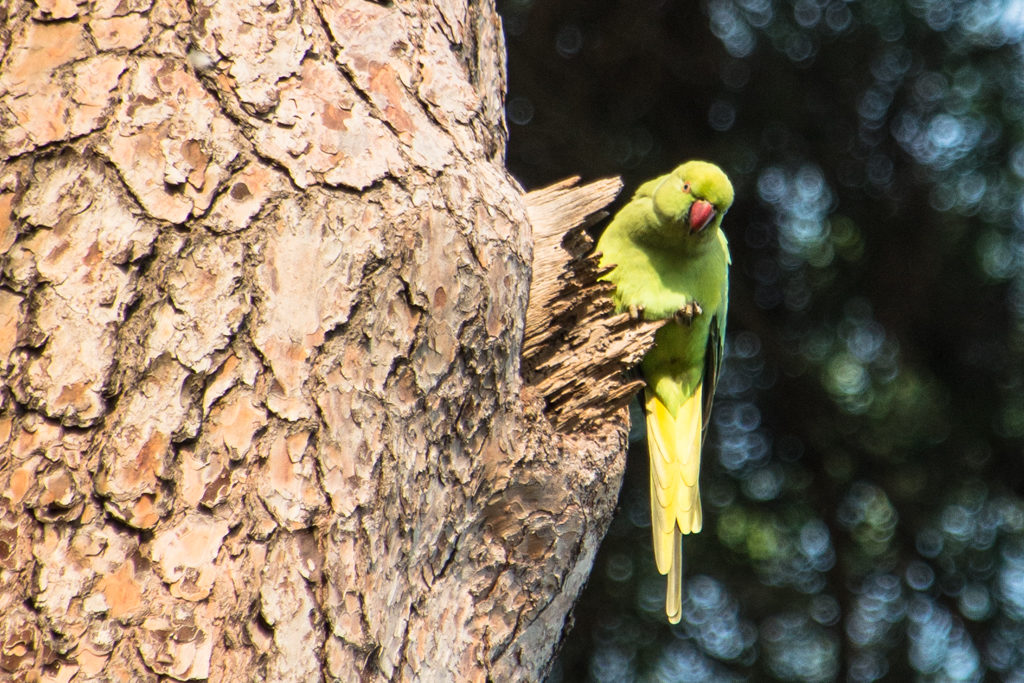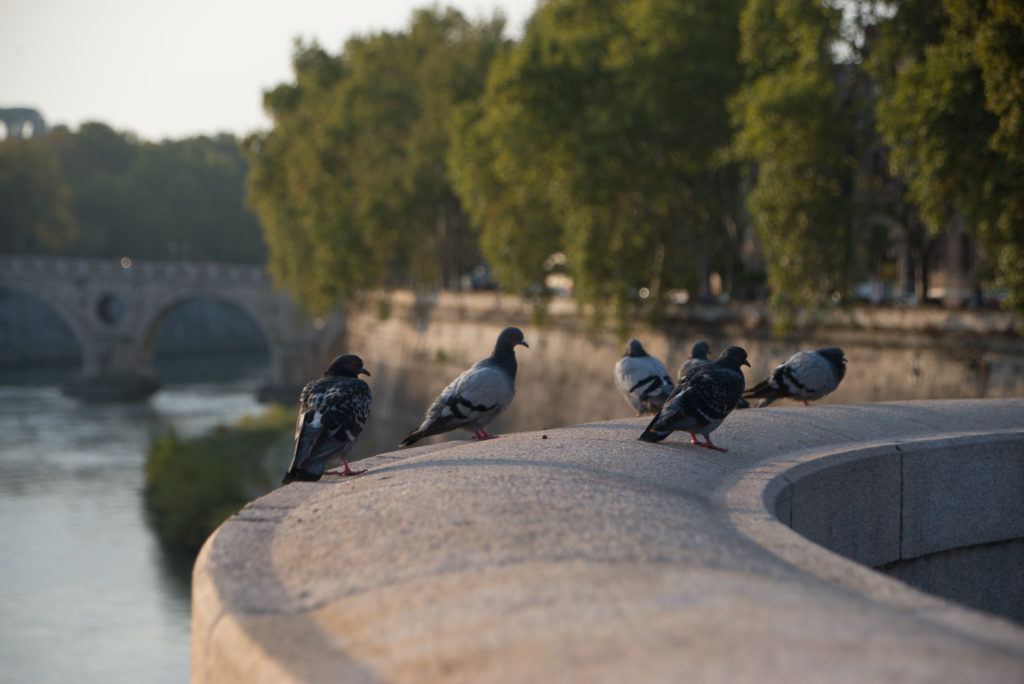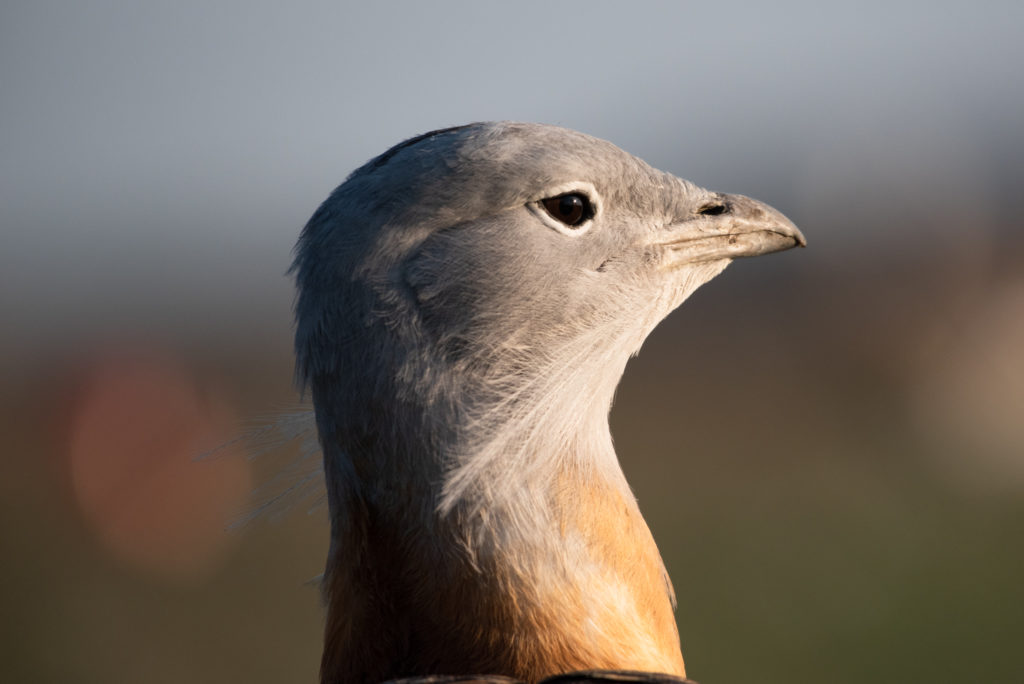
During the first two weeks of April, a fascinating spectacle takes place in the vast planes of the Hungarian Puszta. The Great Bustards are all hopped up and ready to rock and roll. It’s mating season and the males go to dramatic lengths to please the ladies.
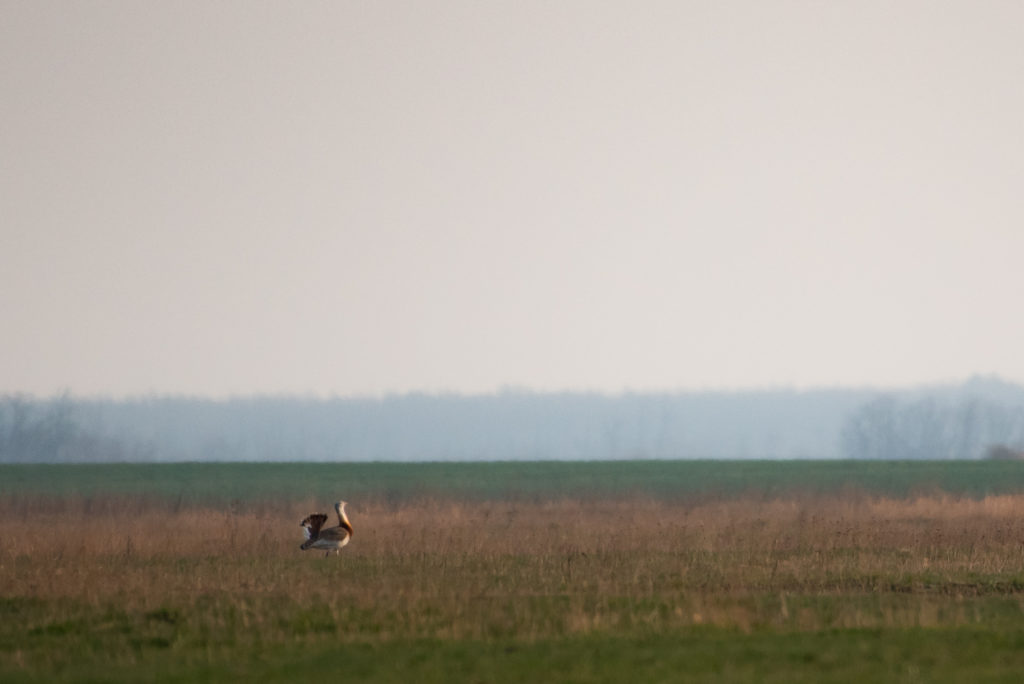
Native to most of Europe, Great Bustards are extremely shy birds, evading human contact by all means since in the run of the past two centuries they have been hunted to the edge of extinction. It’s only due to elaborate conservation efforts that resettle bustards from custody into the wild that the big birds are making a comeback.
No wonder Great Bustards were on the menu before. Males can weigh up to 15 kilos. With a wingspan of up to two meters they’re the world’s largest and heaviest flying bird. Females however are only half a male’s size, and in general, males and females have little to do with each other. Females live separated and raise the youngsters completely on their own. Males live in bachelor groups where they have little else to do but work on their courtship routines. It’s only once a year that they get to meet the ladies and put up their show on the lek – which is the ornithological term for the area where male birds display.
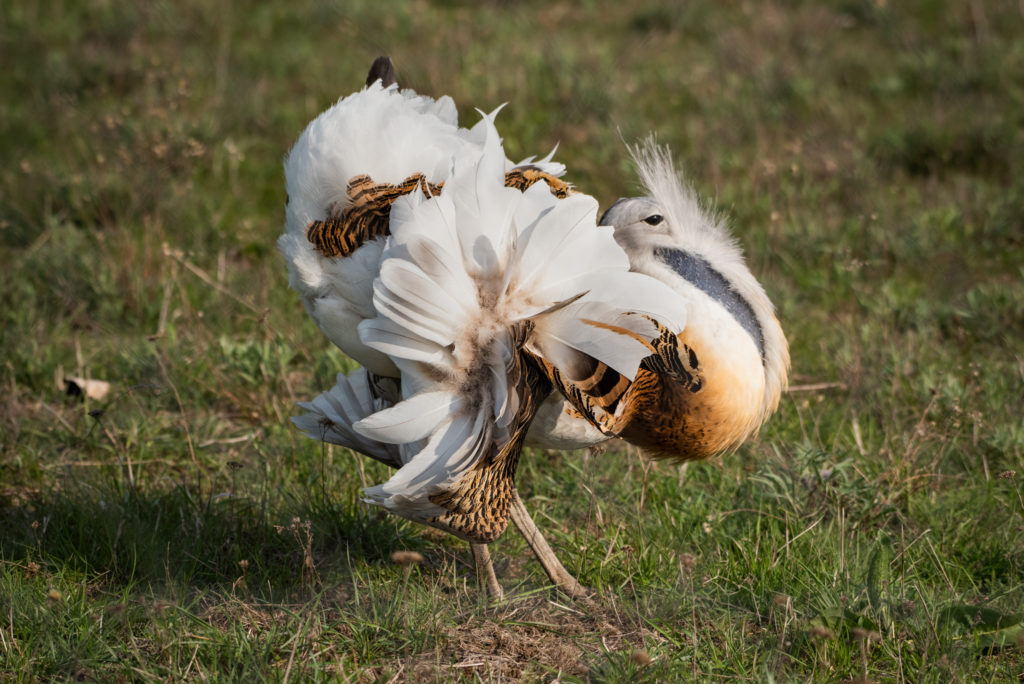
For his display, the male Breat Bustard puffs up his throat poach, which turns his long whiskers up vertically. He draws back his head and neck and turns his tail forward, thereby lowering his wings and erecting his shorter feathers. In this position he looks… stunning. Certainly getting the ladies’ attention. But to be chosen by his critical audience, he needs to do more. Let the dance begin!
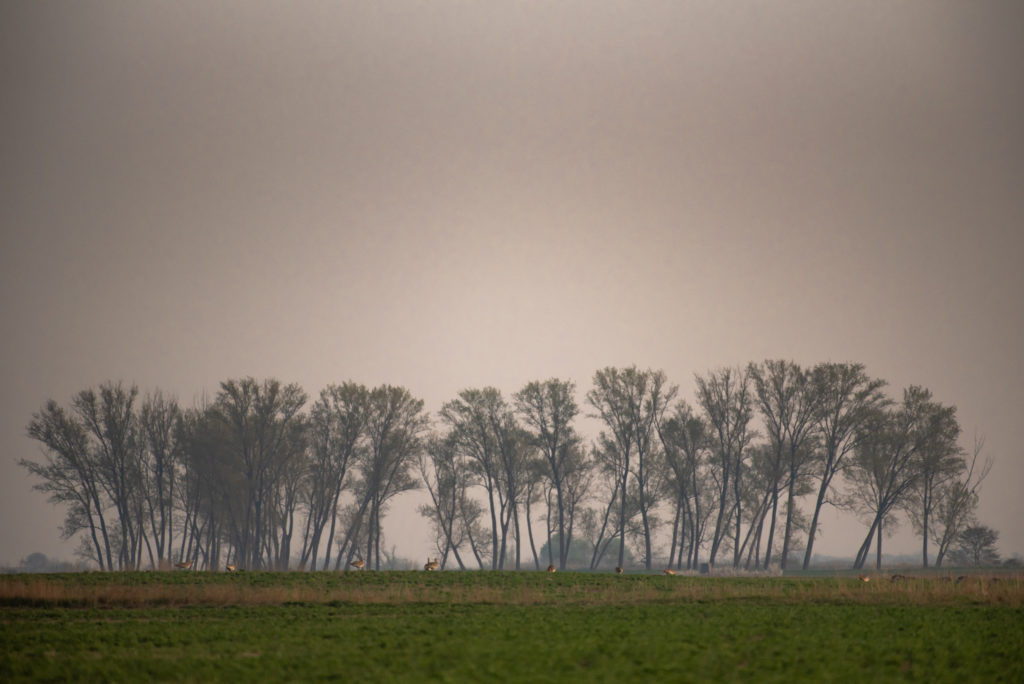
Taking turns among the other bachelors, the Bustard gigolo bobs and bounces, literally shaking his tail feathers. Will the elegance and fluidity of his moves, his posing and his attitude charm the females? It’s the Ladies who decide who gets to procreate.
But there seems to be more to the story than good looks and hot moves. By displaying their behinds, males also present their cloaca to the females, a kind of multifunctional hole which also functions as au lieu of a penis. (Yes, bird sex is nothing more than a cloacal kiss in most bird species). So the cloaca’s state is indeed of interest to the females and they appear to inspect it closely.
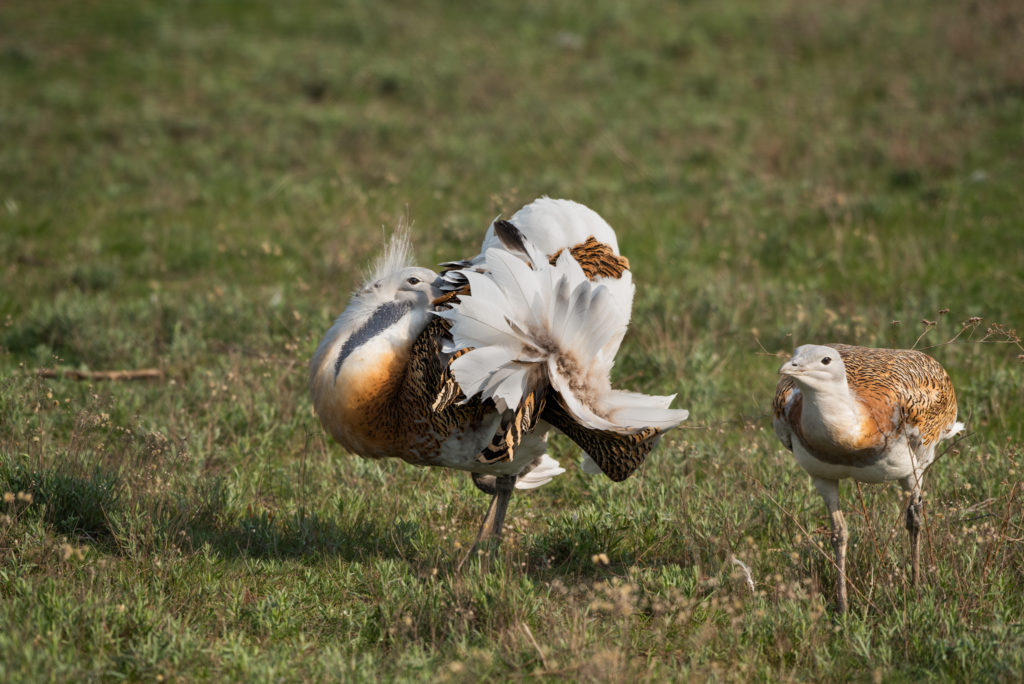
To get their cloaca presentable, male Great Bustards feed on a diet of blister beetles, which are in fact toxic to most animals. Female Great Bustards have not been observed to feed on blister beetles, but males seem to prefer them over any other. It’s a risky habit, but by precise dosage, the beetle toxin will only kill off bacteria in the male’s digestive tract without harming the bird itself. Beauty knows no pain, and a lek is a Great Bustard’s world.
